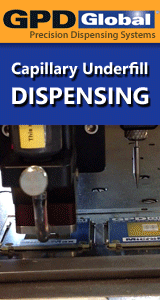In the past when the electronics industry was only beginning to mature, many companies considered CIM systems or even just basic CAD/CAM functionality a luxury of only the large OEM's which would develop their own tools. Now, with the competitiveness of a mature industry and the need for excellent responsiveness, speed, AND quality within one environment, these systems are more of a necessity than a luxury.
Each company has its own unique culture, environments, and budgets. It is important for you to select a software vendor with a clean and uninterrupted "migration path" through their software suite from the most entry level system through to a full TCM, multi-factory system. By working with your vendor, you should find out the scope of their offering, then choose what fits right for you now, but consider the future.
A specific example: Today, your company might be smaller and be concerned about programming machines accurately and quickly, while also generating paper inspection documents. Select a vendor with a solid, mature CAD/CAM tool for process engineering built on a routing backbone and open architecture. For this application, systems are very inexpensive.
A year from now as you grow, you might want to introduce Product Data Management and full BOM control and revision management of all product configurations. The vendor should have a migration path to connect your existing CAD/CAM system used for process engineering seamlessly to this solution WITHOUT redundant data and without data loss. I recommend you really drill down with your vendors to discover the actual nature of this integration, as some claims are a bit over-ambitious.
Finally, when you need full factory integration and web-centric access, you need a direct and simple migration to a TransCollaborative system. Again, make sure the vendor can ensure zero data loss and an effective transition. Look to make sure the project, PDM, BOM, Quality, and all other data is actually in a single data source--not in files. Files become very difficult to manage in a large enterprise.
With respect to software and hardware recommendations, I'm a bit biased considering I administrate a company offering this type of system. However, to directly answer your question, AEGIS' solutions answer the needs above in what we believe to be the most technically and functionally elegant manner available.
Hardware requirements must be addressed on a specific user basis. However, web-centric, single database and n-tier systems will always be more forgiving on the client side (browsers only) as well as more expandable and distributable on the server side. Look for this technology. And again, actually look for the technology in eearnest and be wary of over-ambitious sales claims.
With respect to your request for benchmark data on ROI and bottom line improvements, look to your sales professional and applications support at your software vendor to fit this analysis to your specific application of the technology.
This message was posted  the OnBoard Forums
the OnBoard Forums
reply »
![]() CIM systems for electronics are very PCB-centric in that the...
- Jan 22, 2001
by
bphilips
CIM systems for electronics are very PCB-centric in that the...
- Jan 22, 2001
by
bphilips
![]()
![]() OnBoard Forums
OnBoard Forums
![]()
![]() CIM systems for electronics assembly have traditionally cons...
- Jan 22, 2001
by
Jason Spera
CIM systems for electronics assembly have traditionally cons...
- Jan 22, 2001
by
Jason Spera
![]()
![]() OnBoard Forums
OnBoard Forums
![]()
![]() What recommendations do you have for evaluating the needs of...
- Jan 23, 2001
by
marys
What recommendations do you have for evaluating the needs of...
- Jan 23, 2001
by
marys
![]()
![]() OnBoard Forums
OnBoard Forums
![]()
![]() When a company looks at installing this type of system acros...
- Jan 23, 2001
by
floydl
When a company looks at installing this type of system acros...
- Jan 23, 2001
by
floydl
![]()
![]() OnBoard Forums
OnBoard Forums
![]()
![]() In the past when the electronics industry was only beginning...
- Jan 23, 2001
by
Jason Spera
In the past when the electronics industry was only beginning...
- Jan 23, 2001
by
Jason Spera
![]()
![]() OnBoard Forums
OnBoard Forums
![]()
![]() I gather from your question that you might have experienced ...
- Jan 23, 2001
by
Jason Spera
I gather from your question that you might have experienced ...
- Jan 23, 2001
by
Jason Spera
![]()
![]() OnBoard Forums
OnBoard Forums







